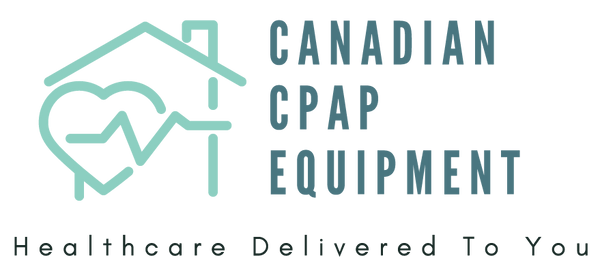Sleep apnea is a serious condition but getting tested for it shouldn’t be complicated. For many individuals, a home sleep apnea test offers a more accessible, convenient, and accurate alternative to traditional in-lab sleep studies.
In this article, we will explore the key benefits of home sleep testing, why it’s often the preferred first step in diagnosing obstructive sleep apnea, and how it compares to overnight lab-based studies.
What is a Home Sleep Apnea Test?
A home sleep apnea test (HSAT) is a portable diagnostic device used to monitor and detect signs of obstructive sleep apnea (OSA) in the comfort of your own home. Instead of spending the night in a sleep lab, you simply apply a few easy-to-use sensors—typically placed on your finger, chest, wrist, or near your nose—that collect important data while you sleep.
These sensors record key health metrics such as:
-
Breathing patterns
-
Oxygen saturation
-
Heart rate
-
Respiratory effort
-
Sleep position and snoring (in some devices)
Comfort and Convenience: Test in Your Own Bed
One of the biggest advantages of a home sleep apnea test is the comfort and ease it provides. There’s no need to travel to a sleep clinic or stay overnight in an unfamiliar setting. Instead, you can complete the test in the comfort of your own home, following a simple setup process.
Sleeping in your own bed often results in better sleep quality and even, more accurate results, as you're more likely to follow your natural sleep routine. This also helps reduce any anxiety or discomfort that might come from sleeping in a clinical environment, making the experience less stressful overall.
Quick and Efficient Results
Home sleep apnea tests offer faster access to care, especially for those in remote areas or facing long wait times for in-lab sleep studies. Instead of waiting weeks—or even months—for an overnight lab appointment, most people can complete a home sleep test within days of referral.
This faster turnaround means quicker results, earlier diagnosis, and timely access to treatment, which can significantly improve your sleep, health, and overall quality of life.
Accurate and Approved by Sleep Physicians
Home sleep apnea tests are clinically validated tools used to diagnose obstructive and central sleep apnea. Devices like the WatchPAT ONE are both Health Canada and FDA-approved, ensuring medical-grade accuracy and reliability. In fact, the WatchPAT ONE has shown up to a 95% correlation with traditional in-lab polysomnography, the gold standard for sleep testing.
Because of this high level of accuracy, sleep physicians trust the results and can confidently provide a diagnosis. If sleep apnea is confirmed, a prescription for CPAP therapy or other treatments can be issued directly based on the home test results—streamlining the path to better sleep and health.
Choosing the Right Path for Sleep Apnea Diagnosis
A home sleep apnea test is an excellent option for individuals who suspect they may have obstructive sleep apnea and have minimal underlying health conditions. It’s especially beneficial for those experiencing common symptoms like loud snoring, daytime fatigue, or pauses in breathing during sleep.
However, if you're dealing with generalized sleep issues or have complex medical concerns, it’s best to speak with your doctor first.
Frequently Asked Questions (FAQ)
Yes. Modern home sleep apnea tests, such as the WatchPAT ONE, are Health Canada and FDA-approved and show up to a 95% correlation with in-lab sleep studies. For individuals with suspected obstructive sleep apnea and no major health complications, they are highly effective and clinically trusted.
No. Home sleep apnea tests are specifically designed to diagnose obstructive sleep apnea (and in some cases central sleep apnea). They cannot diagnose complex sleep disorders such as insomnia, narcolepsy, parasomnias, or restless leg syndrome.
If your results indicate sleep apnea, a sleep-trained physician will review the data and may issue a diagnosis. From there, they can prescribe appropriate therapy such as CPAP treatment or refer you to a specialist if further evaluation is needed.
Your sleep clinic will provide detailed instructions. In general, you’ll need to avoid caffeine or alcohol before bed and follow your regular nighttime routine. The device setup is straightforward and typically takes just a few minutes.

